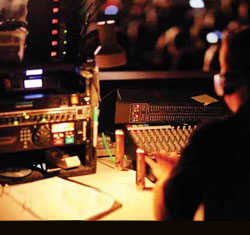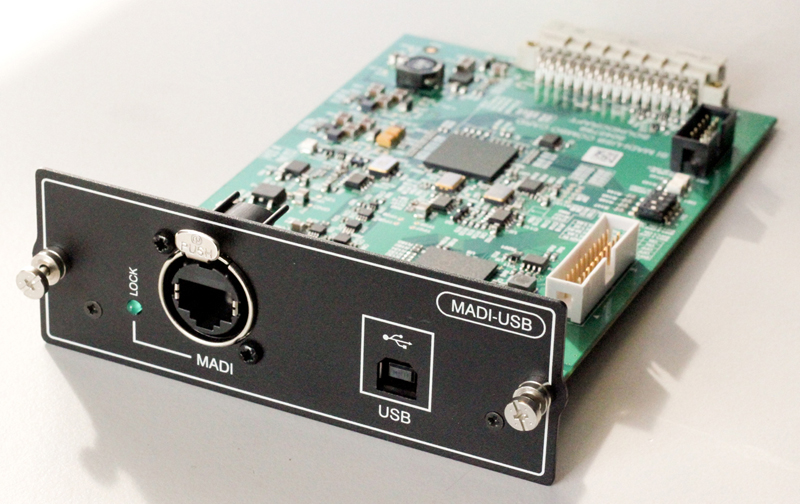
The new Avid VENUE | S3L-X is a leading example of very tightly integrated live and recording capabilities, both operating under the united Avid MediaCentral Platform. Recording can be done directly to Pro Tools (or other DAW) through a simple laptop Ethernet connection.
Further, EUCON and Ethernet AVB network protocols are also supported, ensuring compatibility with a variety of Avid and third-party products.
MADI and ADAT networking protocols have been popular for years to interface DAWs and hardware recorders, with Soundcraft recently releasing the new 64 x 64 MADI-USB combo card for Si Series consoles.
It offers a Cat-5 MADI stream for use with Soundcraft stageboxes and other MADI devices as well as a low latency multi-channel USB interface for live and studio recording to DAWs and other recording systems. The card comes configured to provide 32 x 32 via MADI and 32 x 32 via USB.
Two card options for the new Midas M32 console are tailor-made for recording. The DN32-USB card supplies 32 x 32 routing of tracks to PC or Mac computers with USB 2.0 connectivity, while the DN32-ADAT card provides 32 channels of ADAT inputs and outputs that can connect to computer interface cards or stand-alone recording decks.
Many manufacturers select a single network protocol to route signals between their stage boxes and the console, but also offer a network “bridge” that can convert between different protocols allowing the end user to interface between various gear. Solid State Logic (SSL) Live consoles has MADI-Bridge, supplying a MADI to Dante IP audio network interface that provides 64 channels at 48 kHz or 32 channels at 96 kHz.
Roland Pro AV consoles operate on the S-MADI REAC Bridge that allows interface between their REAC (Roland Ethernet Audio Communication) protocol and MADI. It supports 44.1 kHz and 48 kHz and can sync to Word, MADI or REAC clocks.
There are some very smart ways to take advantage of the ubiquity of USB. For example, the DiGiCo UB MADI is a hot-pluggable USB bus-powered device for USB 2.0 that can handle 48 channels of I/O simultaneously (full-duplex at 48 kHz). It can clock to itself, or a valid MADI, AES3 or Word clock.
A few years ago, RME devised MADIface USB, an interface approach that’s proven popular. Using optical MADI connections, it’s able send and receive up to 64 channels of digital audio up to 2,000 meters (6,500 feet) in distance. It can be used as a bridge between USB 2.0 and MADI, or as a MADI repeater between MADI equipped units.
The MADIface USB can also convert between MADI optical and coaxial formats, and supports 64 x 64 at 48 kHz, 32 x 32 at 96 kHz, and 16 x 16 channels 192 kHz.


